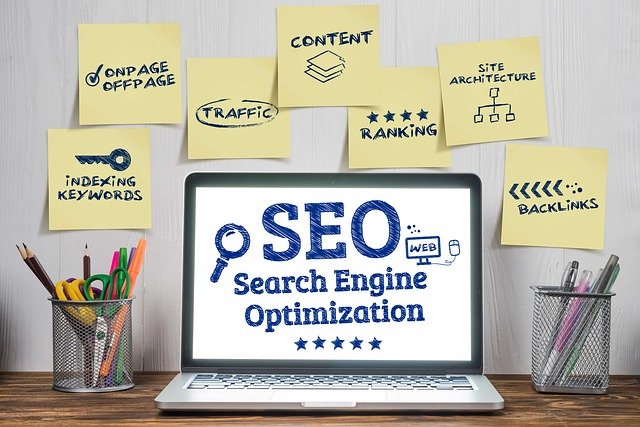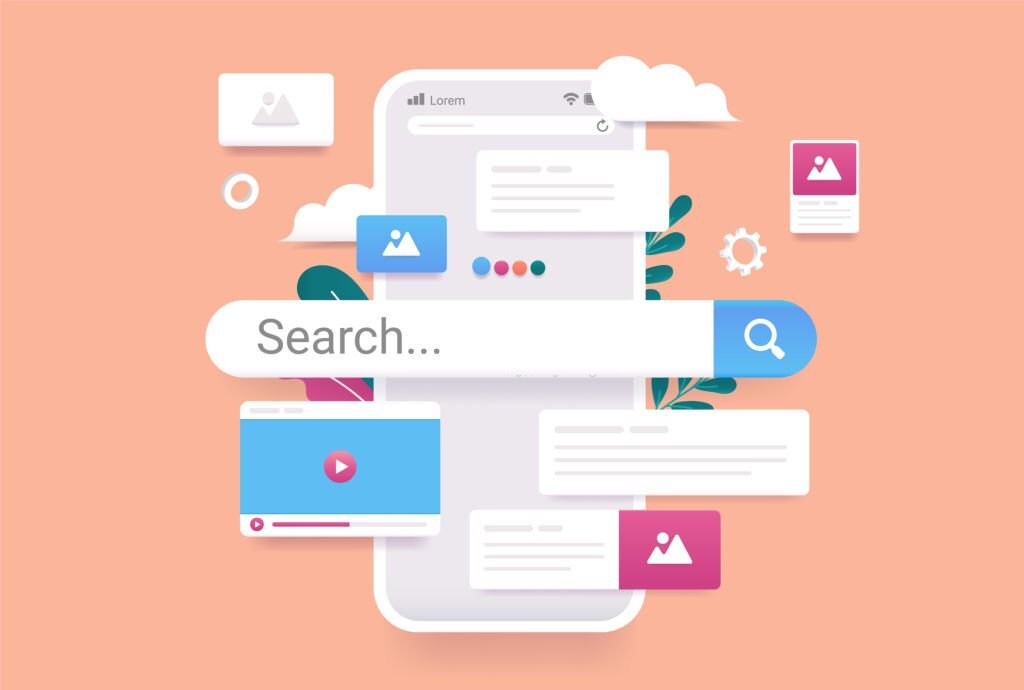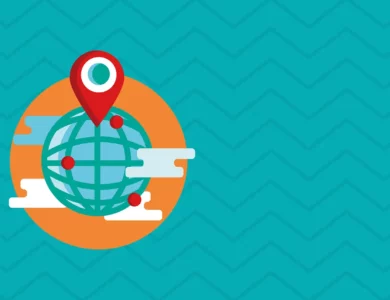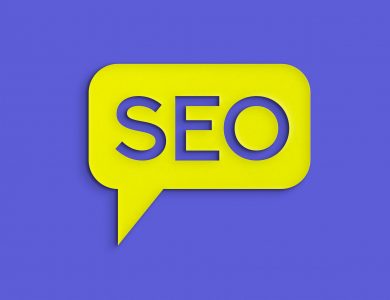
Image SEO plays a huge role in the eCommerce business. Since images are a crucial factor in producing creative content, image optimization can influence how your website performs.
The usage of images on eCommerce is plenty. They can help describe complex topics, break up walls of text, illustrate articles, entertain the audience, and more. The problem that most people encounter when using images is that they can be a bit heavy and can cause slow-loading web pages. It goes without saying, therefore, that high-quality and optimized images are used in order not to slow a website down.
This only means that having optimized images can let you tap into many opportunities that can highly improve your search performance. So read along to learn more about image SEO.
What is Image SEO?
Image SEO is the process by which you improve the indexability, readability, and quality of images before they are used as part of a webpage. It involves practices that will help you rank better in search engines while improving the quality of images for the delight of the audience.

As mentioned, images improve the page and serve as a short break from text-heavy content. As for eCommerce, it provides more contexts for product pages, improving the overall shopping experience of the users. At the end of the day, image SEO lets you achieve two goals in one go, it makes your content discoverable and lets the users actually enjoy being on your website.
Why Should You Care About It?
When you have an eCommerce business, all that you care for is to drive traffic to your site so people can see your products and make sales. With Image SEO, you actually get to have a higher chance of getting towards these goals. The reason for this is that images are good drivers of quality and organic traffic. Users are most likely to check out the images and what they are about so they have to click on the link to your site.
Quality-wise, you enhance the images as you optimize them. It is not all about looking good for Google but also for your target audience. Image SEO ensures that the images on your site will look great on-screen. Without it, images could look distorted or poorly staged. Image quality is crucial when it comes to online shopping because potential customers cannot assess the products in person. With optimization, product photos become more appealing and are more likely to convince the users to buy them.
As a rule of thumb, anything that would influence your SEO efforts should be important to you. This includes image SEO because it has plenty of benefits that would be a game-changer for your business.
What are the Benefits of Image Optimization in ECommerce?
Optimized images do more than gain the attention of potential customers. There is a multitude of benefits that you can enjoy when you optimize images for eCommerce. Some of these are:
1. It strengthens visibility.
Highly relevant images are directly shown on search engine results pages. When you have optimized images on your website, your presence in search results also increases. There is a whole bunch of things that influence your images’ rankings. Some of these are discoverability, crawlability, indexability, image popularity, topic relevance, image attributes, and captions among many others. Image optimization ensures that all of these factors are taken care of so that it will be easier for search engines to discover and prioritize your images.
2. Indirect traffic boost
Some users click on the images to check out more information. They are given the option to visit the website from where the images are coming from so your traffic may get boosted with optimized images.
3. Improvement of topic relevance
One of the ways to get better rankings in Google search is by improving the thematic concept of a website. You can optimize an image by adding tags as its description, making your page more relevant in the process.
4. Usability improvement
One way to optimize an image is by appropriately condensing its size while still maintaining quality. When this is done, it can be utilized for web pages that are also viewed on devices other than computers. Most mobile devices have a lower bandwidth so optimizing images will prevent pages from loading slowly.
5. Improves the overall user experience
When you optimize images for web use, you are actually providing a series of positive changes for your website. First, the quality of the images is maintained so the users enjoy exploring the pages. Next, the download time gets reduced which means a faster loading time is ensured. This means that the performance of the website is also improved. Ultimately, when these things happen, the users do not have to wait a long time to see the pages. It makes them enjoy the experience of being on your website. This could be great because the happier they are, the more likely they will complete their customer journey by making a purchase.
6. Increased sales
Potential customers often use image search when searching for products. Image SEO puts your product photos out there on top of search engine results so it increases the chances of getting seen by customers, thereby increasing conversions.
Step-by-Step Guide on How to Optimize Your Ecommerce Product Images
Judging from the benefits mentioned above, image SEO is more than just supporting your website to be optimized for SEO. It affects the whole eCommerce efforts and user experience positively.
Here’s how you can optimize your product images for eCommerce:
Step 1: During design, use the right product image dimensions.
It is a must that you use the ideal product image size on every platform. Social media sites, for example, have different recommended image file sizes in order to maintain the quality of images in their feeds. Having the right image dimensions and background removal services will eliminate the possibility of your photos getting cropped or looking pixilated.
Step 2: Place your product images on a white background.
A plain white background gives your photos a professional look. It ensures a consistent flow of photos within the products page. When you have a white background in all your photos, the feed will look neat and organized so potential customers can easily browse through the products. There are eCommerce tools that you can use to instantly remove bg so you can add a white background in minutes.
Step 3: When saving your image, optimize your image file size.
Paying attention to the file size will prevent having a bloated webpage. According to studies, 21% of the total webpage’s weight is made up of images. It is a must that you compress your images to reduce the file size without affecting the quality. Doing this would help improve website speed by 2 seconds or 33%.
Step 4: Use appropriate and keyword-rich image file names.
It is crucial to have descriptive and keyword-rich file names to help search engines understand your image. Changing the default file names into something appropriate will improve your SEO value because it ensures that your images will show up whenever a user searches for something that matches with your file names.
Step 5: Choose the right file type.
There are many image formats that you can use for websites but you need to have the right one that will not impair your site’s SEO. The most commonly used file types are JPG and PNG and they both have their own pros and cons. A JPG photo, for example, is low on size but also with quality. Converting images into JPG format also permanently deletes some information that you may need. As for PNG, the quality is higher but it is also heavier in size. Choosing which one to have will depend on your needs. If you are prioritizing load speeds, JPG is the way to go. You just need to adjust the quality level in order to balance the loss of quality.
Step 6: When uploading, optimize your alt attributes.
The alt attribute is like a written copy to describe an image. Search engines use crawlers to comb through web pages and this makes it easier for them to index your site. It provides context about what the image is all about. Optimizing the alt attributes will provide a clear description of the image so your website becomes a relevant source when someone searches for the same keywords.
Step 7: Optimize your thumbnails too!
Most search results pages will not show images in their respective sizes and instead display a set of thumbnails. Ecommerce sites also show only the thumbnails of product photos in order not to take up too much space on the pages. The problem with thumbnails is that they can easily accumulate bandwidth space so it can slow down the page if you will not optimize them. You can save your thumbnails into the smallest possible size. Another way to optimize is to vary the alt attribute texts and not have the same ones used on the full version of the thumbnails.
Step 8: Make sure your images are crawled, so make an image sitemap.
Image sitemaps help make Google notice your pages. What needs to be done here is to list down the images in the sitemap so that web crawlers can crawl the images. It is like adding a sign to help the crawlers find the important files, like images, on your site. Take note that you need to add specific tags to all images to ensure that they have the needed information that crawlers need to index your images.
Step 9: Submit your image sitemap to Google using the Google Search Console.
Using sitemaps does not guarantee getting your images indexed by Google. The Search Console is the rebranded Webmaster Tools and it helps website owners understand how their pages appear in the Google search index. Submitting your sitemaps serves as a directory to which Google uses for finding pages in your site. If you submit your sitemaps, Google will be alerted about the changes you made on your site, which gives the impression that you regularly update your website.
Step 10: Beware of decorative images.
Any images that do not have anything to do with your products but enhance the aesthetics of the webpage are considered decorative. These are background images, buttons, borders, and the likes. Although they add extra appeal to your website, these decorative images can add weight and might affect the load times. You might want to check if all these images are not using too much space so that they do not hurt your website’s ability to make conversions.
Takeaway…
Image SEO is considered an art that has to be mastered by anyone who is building a website, especially those in the eCommerce industry. Being able to harness the power of images through optimization will do a lot of good to your eCommerce business. Remember that providing quality images is the cornerstone of an online store but it can also be the reason why people can’t find you on the web. Optimizing your images would allow you to present a pleasant website but still being able to remain a good standing on search engine rankings.
There are so many ways that you can do to ensure that all images on your website are optimized for SEO. Before you begin uploading photos to your site, you need to follow the optimization tips that are listed above. Website owners and marketers are actually lucky these days because aside from image SEO methods, there are a lot of eCommerce business tools for startups that they can use to build and maintain websites appropriately.







